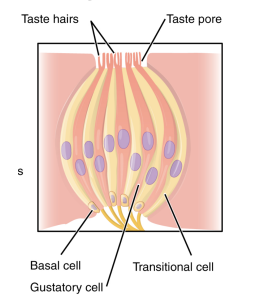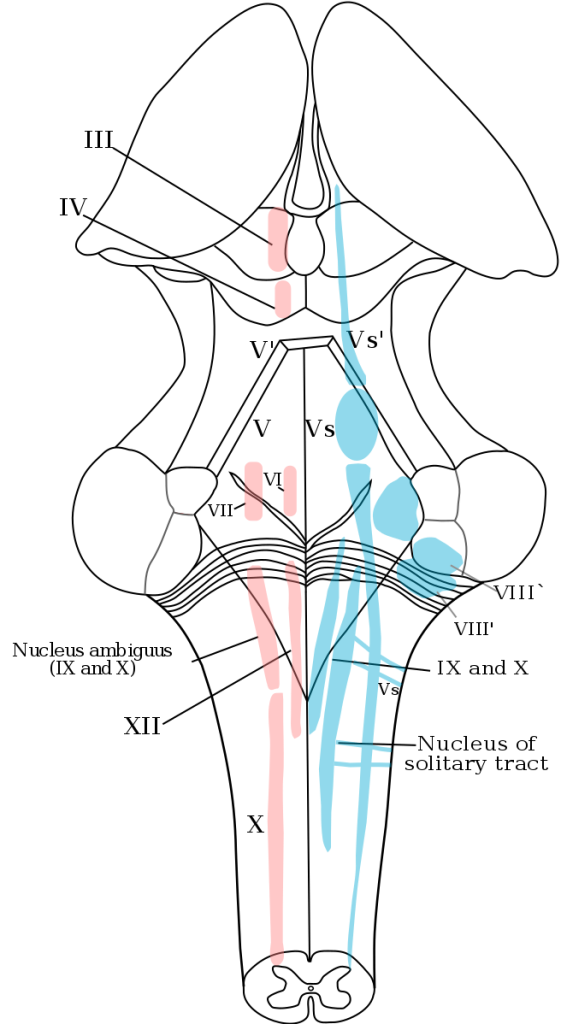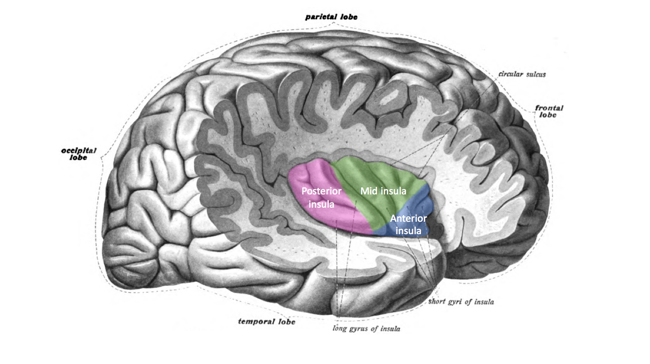Taste and Smell
35
Learning Objectives
Know where taste information first reaches the brain.
Know where the nucleus of the solitary tract is and what role it plays in relaying taste information to the brain.
Taste buds are formed by groupings of taste receptor cells. Receptor cells protrude into the central pore of the taste bud. Chemical changes within sensory cells, from the taste molecules binding onto the taste receptors, will result in neural impulses that transfer to the brain through other nerves. Where these neural impulses transfer to will depend on where the receptor is located, such as the posterior two thirds of the tongue. Taste information is transmitted to the medulla, thalamus, limbic system, and to the gustatory cortex, which is tucked underneath the overlap between the frontal and temporal lobes (Maffei, Haley, & Fontanini, 2012; Roper, 2013).

Due to the fact that taste cells have no axons, secondary afferent neurons with cell bodies in the nucleus of the solitary tract, which is located in the medulla of the brain stem, make synaptic contact with taste cells. Depending on where these cells and neurons come from, they will terminate in specific parts of the solitary nucleus. After termination at the solitary nucleus, the new information will relay data to the thalamus. In addition, information from the thalamus is transported to the frontal operculum and insular cortex, which is the primary taste area of the brain.


OpenStax, Psychology Chapter 5.5 The Other Senses
Provided by: Rice University.
Access for free at https://cnx.org/contents/Sr8Ev5Og@12.2:Nw9FOKLs@13/5-5-The-Other-Senses
License: CC-BY 4.0
Adapted by: Maria XiongCheryl Olman PSY 3031 Detailed Outline
Provided by: University of Minnesota
Download for free at http://vision.psych.umn.edu/users/caolman/courses/PSY3031/
License of original source: CC Attribution 4.0
Adapted by: Maria Xiong

